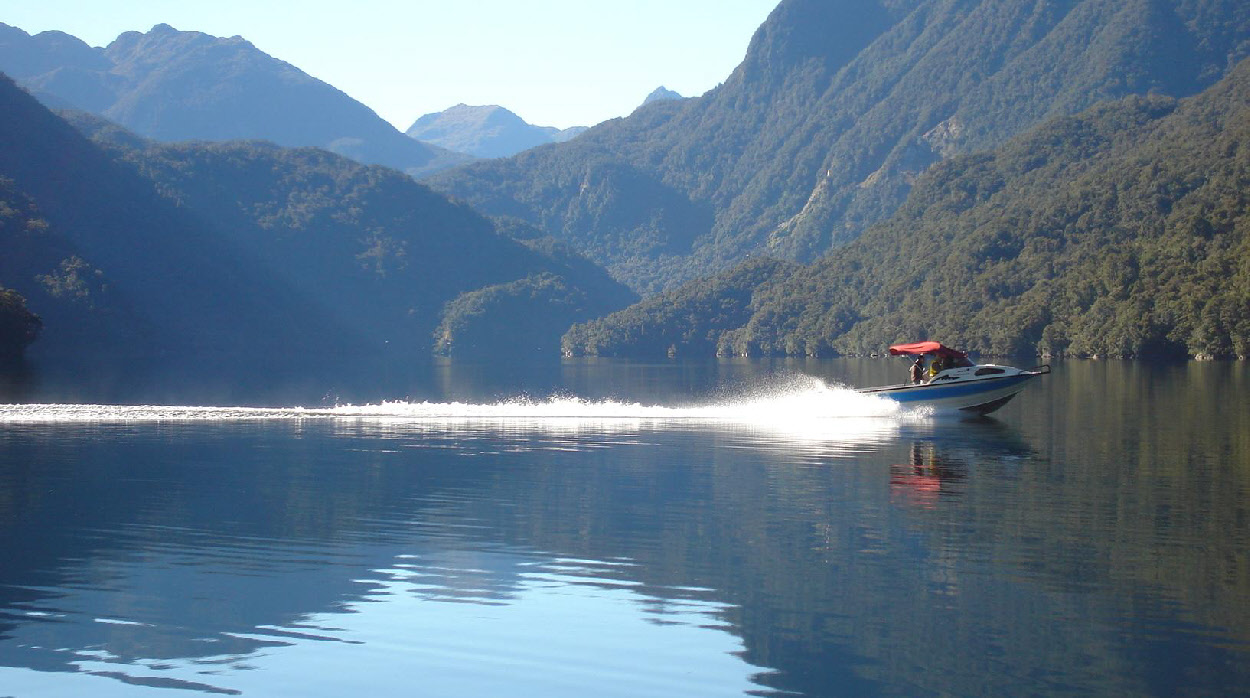The high-speed propeller was invented over 170 years ago and has dominated the propulsion
market ever since. Despite 60 years of development, water-jets have struggled to
make significant inroads. The Contrapel Hybrid drive is about to change that. The
system is so advanced that it carries out all the functions of both propellers and
water-jets with none of the drawbacks of either. Externally it resembles a traditional
water-jet, however internally the method for developing thrust has much more in common
with conventional propeller systems. The Contrapel drive uses a pair of contra-rotating,
fully enclosed hybrid propellers, capable of operating above the water-line. The
mode of operation of the hybrid propellers is to accelerate the water from out of
the intake (pick-up) duct and then discharge it through the outlet, requiring only
enough back-pressure downstream from the propellers to keep the system primed. This
contrasts with the traditional jet which does not accelerate the water until further
downstream in the nozzle section, which requires the generation of high pressure.
The Contrapel Hybrid propellers produce lift in a similar way to open water propellers,
by using slippage. The use of hybrid propellers enables the mass component for each
revolution be maximized and the plume velocity to be minimized, thus meeting the
fundamental laws of Froude efficiency. This contrasts with the low-mass per impeller
revolution and high-plume velocities present in conventional high-speed water-jet
designs.
In order to get to this point however, major design considerations still needed to
be addressed. Producing linear flow with no stator section, requires a pair of counter-rotating
hybrid propellers one positioned directly in front of the other. Both operate in
tandem to produce the desired axial flow, but they also must accelerate the water
across their blades and generate significant lift. When the first prototypes were
attempted, a perplexing conundrum became apparent. In order for the propellers to
generate this lift, a drop in the pressure forward of the leading blades was required.
As one propeller is located directly in front of the other, this then caused the
downstream propeller to lower the pressure on the wrong side of the upstream propeller.
Counter-rotating propellers in open water do not have this problem, since water
is replenished from the surrounds, as the acceleration occurs. In an enclosed tube
however, the only source of usable water is directly upstream. Consequently the
downstream propeller was scavenging against the upstream propeller causing it to
stall. Reversal of the pressure gradient on the blade was disastrous, as a huge
amount of energy was being absorbed. Once again the solution was counter-intuitive,
being resolved by increasing the speed of the upstream propeller, so that the pressure
correction could be made.
Click on icon to view animation
CLARIFICATION OF TERMS:
You will have noticed that when discussing water-jet propulsion, there is a lot of
interchange in usage between the words “propeller” and “impeller”. Generally, propellers
are defined as devices with a revolving shaft with blades and are used for “propelling”.
The word impeller is used to describe rotating blades that are enclosed, as in a
water-jet (which is also a pump). Impellers like propellers, also have blades that
revolve on a shaft. Unfortunately there is not a generic word available that satisfactorily
describes each device’s specific method for developing propulsion. Rather the definition
of the propeller is very general and that of the impeller appears to be specific
to use with pumps and water jets.
The lack of definition may help to explain some of the continuing confusion in the
industry. They both may revolve on a shaft and have blades that ultimately induce
propulsion, however the way each one works is quite different in both function and
purpose. Each one has its own specific design requirement and neither is interchangeable.
Furthermore, neither definition adequately describes the rotating blades of the
Contrapel system.
Therefore some form of definition is required. For this discussion the following
definitions will be used:
• Propeller Any set of blades on a rotating
shaft that utilize slippage to create lift resulting in a change in velocity
of liquid as it crosses the
blades, sufficient to produce usable thrust. The liquid’s speed directly
downstream from the rotating
blades must be higher than the initial velocity upstream from the device.
• Above the water-line Any set of enclosed blades that rotate
on a shaft, resulting in entrained fluid across the impeller,
jet impeller primarily designed to minimise slippage
and induce high pressure-head downstream from itself. The
liquid’s speed directly downstream
from the rotating blades need not be higher than the initial
velocity upstream from the device.
The pressure must be sufficient to create a high change in liquid
velocity through a nozzle, thereby
generating thrust.
• Screw Rotating blade/s on a shaft in
the form of a helix, designed to move liquid axially at a constant rate.
• Contrapel Any enclosed pair of counter-rotating
blades with opposite pitch, that use slippage to create lift and
Hybrid Propellers a change in velocity of the liquid
across the blades sufficient to produce usable thrust. The water
speed directly downstream from
the rotating blades must be higher than the initial velocity.
Please contact us at - admin@contrapel.com
